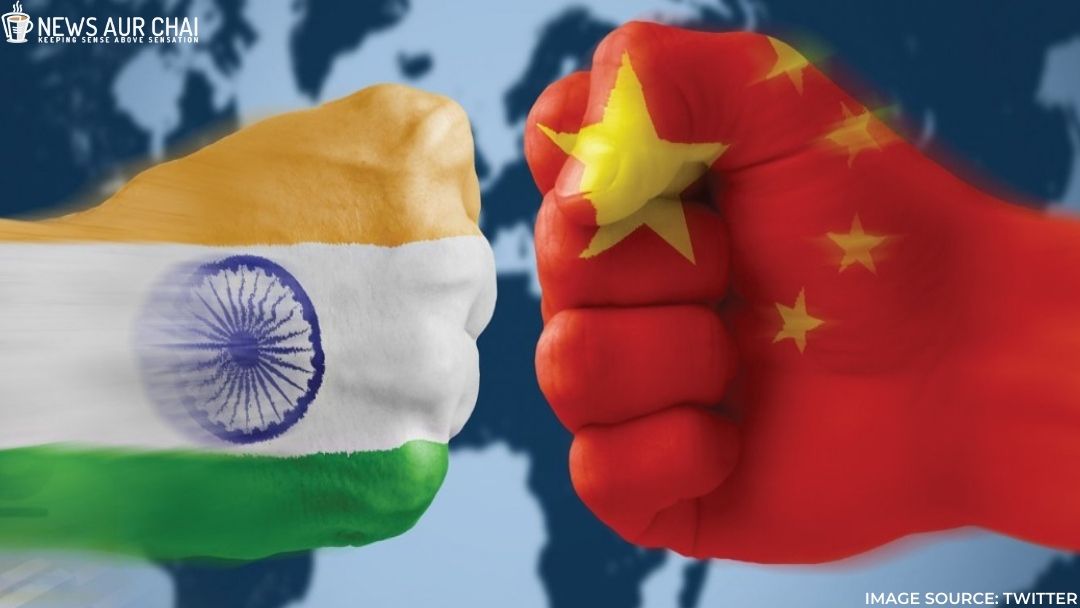
Amid the ongoing stand-off along the Ladakh post, India has now initiated an economic war between New Delhi and Beijing.
Indo-China trade relationship saw a downfall since the beginning of the new century wherein with the first two months China’s exports to India were 67.1 billion yuan (USD 9.5 billion), down 12.6 per cent yearly basis and imports from India dropped 11.6 per cent to 18 billion yuan (USD 2.5 billion), as per the report by the Chinese state-run Global Times. Bilateral trade fell by 12.4 per cent to 85.17 billion yuan (USD 12 billion) in the first two months, the report quoted Chinese Customs data.
The initial decline was due to the coronavirus-induced lockdown, resulting in the slowdown of the two economies.
Impact on Indian startups:
The blacklist excludes the country’s most valuable startups, including the 16 billion dollars payments giant Paytm, funded by Ant Financial, as well as education star Byju’s App, which counts Tencent as an investor. In 2017 Tencent made it initially invested in Byju’s accounting to 40 million dollars. Yet in 2019, it once again invested through its entity Proxima Beta by funding Rs 43 crore against which, over 5,000 shared has been issued.
Tencent, a Chinese business giant, have also made their presence in the Indian fintech market, ride-hailing service as well as in online food delivery platform. In November 2019, it was reported that the company had acquired a minority stake of around 10 per cent (150 million dollars) in Policy Bazaar.
Moreover, as per the reports Chinese internet conglomerate Tencent had invested 400-million dollars in ride-hailing major Ola, valuing the Bengaluru-based startup at over 3.8 billion dollar back in 2017.
In April 2020, as per the data given out by Tofler, it also made an additional investment in Swiggy along with other investors from South Korea raising the total capital of the firm around 156 million dollars. Even MeituanDianping, a Chinese group buying website for locally found food delivery services, consumer products and retail services had invested in February 2020.
In total, 18 of India’s 30 unicorns have Chinese funding, Gateway House, a Mumbai-based think-tank reckons. However, new investment rules and rising anti-China sentiment may slow the overall flow of funds from the Beijing, which in turn will affect the growth.
Impact of Boycott on a few Indian industries:
- Sports industry
The surprising call to boycott Chinese sports items has shook the industry, with them responding “can’t suddenly do it”. “They have more than 50 per cent share in the sports market; We say ‘vocal for local’ but Government policies over the decades have led to Chinese products completely invading our markets.”, says Lokesh Vats, Managing Director of the domestic manufacturing Giant, VATS.
As per the data provided by the Department of Commerce of the Export-Import Data Bank for the financial year 2018-19, China’s share in the total import of each type of sports equipment is as follows:-
|
Type of sports equipment |
China’s share in the Import (INR in crores) | Total amount of Import (INR in crores) |
|
Gym, athletics equipment |
694.77 |
1,002.50 |
|
Badminton racquets |
42.70 | 130.31 |
|
Table Tennis |
(mainly TT balls) 11.54 |
17.77 |
| Football | (mostly machine-stitched balls)12.84 |
18.57 |
| Other equipment | 197.25 |
357.32 |
- Technical industry
Even though India manufactures mobile phones, televisions (TVs) and cars, their components are either imported from China or the vendors of the final products are dependent on China to increase their sales. In the mobile phone segment alone, the Chinese dominate 72 per cent of the total products. Moreover, the Chinese hold 45 per cent in the area of smart TVs and around 9 per cent in the non-smart TVs.
B. Thiagarajan, Managing Director of the air-conditioning major Blue Star, had told Financial Express, that China is the biggest component supplier, “The Atmanirmbar initiative has been taken by the government to enable component makers to become self-reliant, but all these will take time.”
- Pharmaceutical industry
The delays faced in clearing the import consignments from China in India’s ports and airports, may soon create shortages and also lead to increasing costs.
How will a ban affect China?
In case of Indo-China economic relationship, the trade is lopsided in Chinese. If we look at the broader spectrum, economic measures taken by India will hardly hit China, as it is far less dependent on the Indian market than New Delhi is on Chinese imports.
Weeks after the introduction of the app ‘Remove Chinese Apps’, 59 applications were banned by Government of India, including the popular ones like TikTok, UC Browser, SHAREit.
Nonetheless, the most significant lever for India is its market itself, which has emerged as one of the relevant overseas markets for Chinese companies in the technology space and telecom. For TikTok, one of the 59 apps banned, India is the biggest foreign market, with around 120 million local users. While the parent company ByteDance reported modest earnings of 5.8 million dollars in 2018-2019, its first full year in India, company officials said the move could cost billions of dollars in future revenue.
As per the reports by Chinese finance magazine Caixin, ByteDance said “the ban could come with a hefty price tag, costing the company more than 6 billion dollars in lost revenue — a sum higher than all the losses suffered by the other 58 banned apps combined.”
The magazine also mentioned that Weibo, the Chinese equivalent of Twitter, “is also feeling a reputational pinch after losing one of its highest-profile local users following the ban.”
Furthermore, it is anticipated that India reportedly assessing whether Huawei and ZTE can participate in its 5G rollout. This would result in a similar effect of costing hundreds of millions of dollars in potential revenue for Chinese companies.
Moreover, though the said move has caused many TikTok “stars” to be unemployed, if India makes a proper strategic plan, it can turn the table in its favour. Through “Make in India” plans and by initiating other programs, the country can give employment to India techies to develop alternatives in place of banned apps. India can also look for alternative sources for its raw materials (For Instance: Taiwan) and thus can reduce the shock of economic war.
Tough Decision:
Former Foreign Secretary Shyam Saran said that India would have to bring about with strategic plans while going for a trade face-off with China. “You have to choose areas where you don’t get hurt more than they do,” he said. India might be able to hurt individual companies but targeting a five-times-larger Chinese economy as a whole, would require well-planned strategy and execution.
Nevertheless, the economic impact on India would largely depend on Chinese calculus as to how they reciprocate. As currently, the Chinese economy is facing the worst crunch, and losing a significant foreign market would be a challenge on its own for China. Moreover, considering various barriers faced by the Chinese economy in the wake of the pandemic will also play a crucial role in its decision.






One Comment